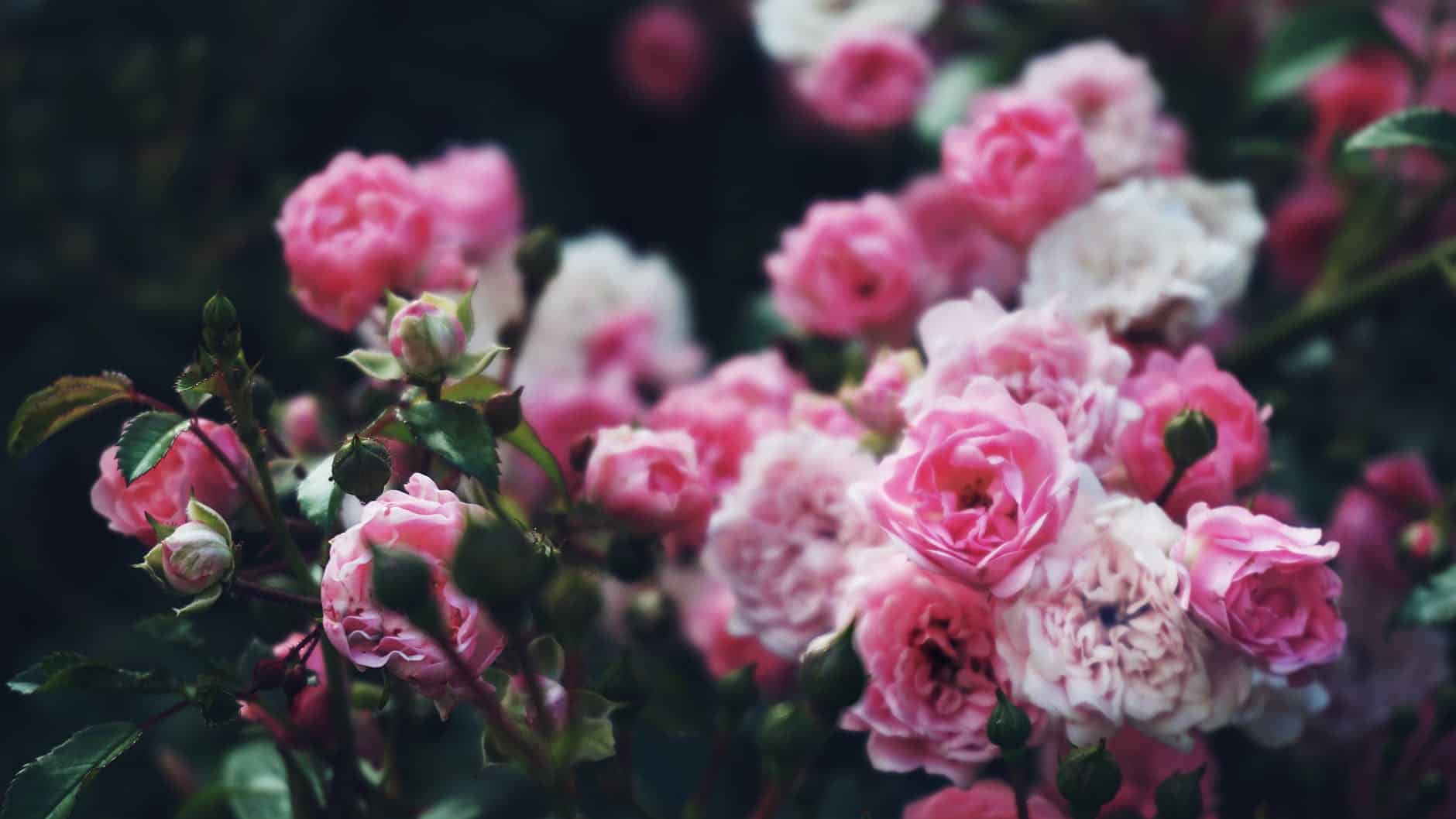We’ve been caring for roses for several years and have learnt a lot. In the beginning, we struggled to get good healthy rose blooms on our plants. But in the past few years, we get a full blown, blooming rose garden that lasts all summer with regrowth. Over the years, we’ve learnt some tips on how to get more roses and will share them here.
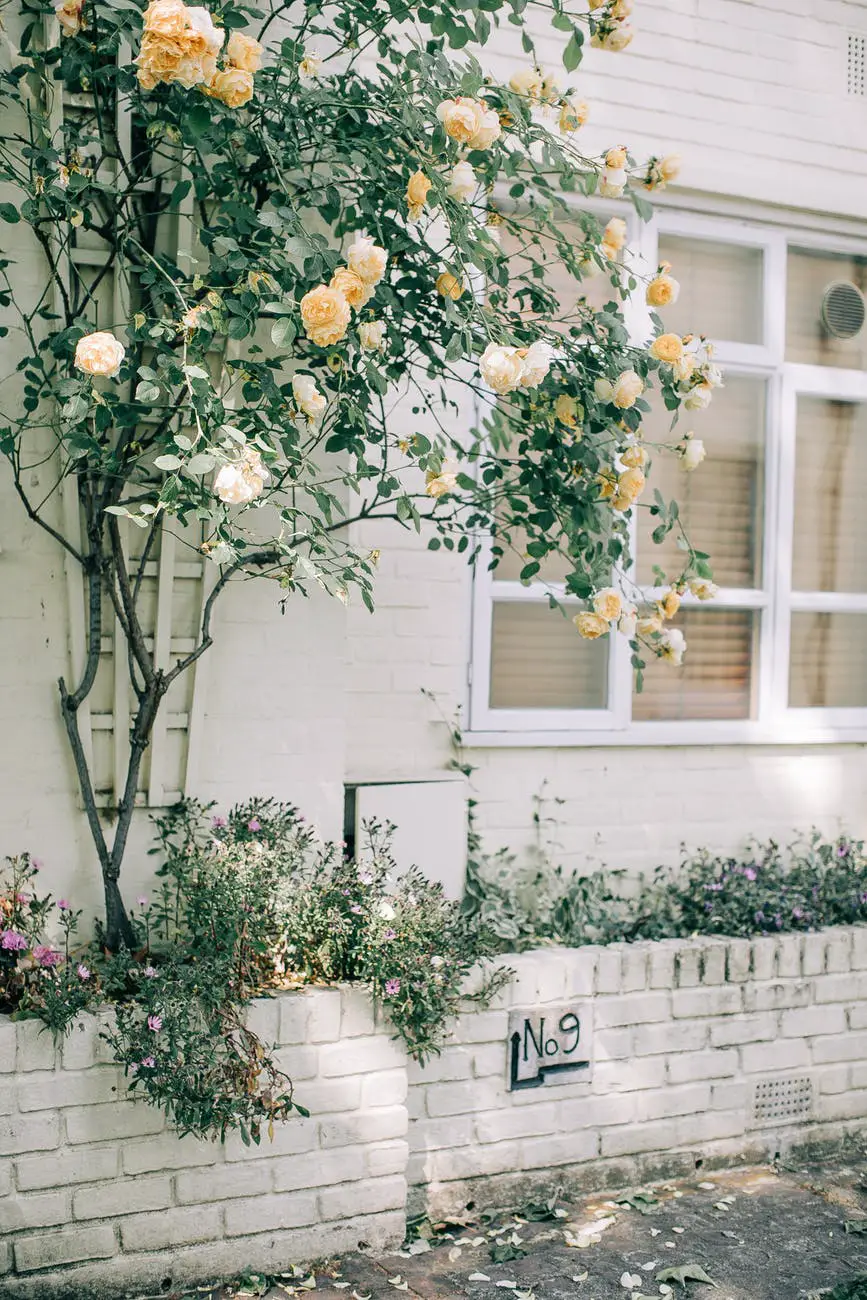
many kinds of roses, yet the same
Roses are loved the world over for their endless variety, beautiful colours, and intoxicating scents. Earlier plants gained a reputation for being difficult to grow. Black spot was a problem. Aphids, leaf cutters and beetles did their part too, dining with gusto on leaves and blossoms alike.
Today there is a huge selection of roses from which to choose. From miniature plants to tea roses, to floribunda, to vigorous climbers, each has its own characteristics. And each has its place in the garden, from a beautiful pot, to mulched bed, to hillside accent, to decorative (and sturdy) trellis. But all have the same general requirements. When those are supplied, roses will happily reward you with big, beautiful blooms.
1. plant: from the ground, up
Start with the site. What form of rose plant do you have? How large will it grow? A floribunda requires much more room than a tea rose, so plant it where it can spread out. Place a climber where it will be able to grow naturally, without having to be continually pruned. Space your tea roses far enough from the house that air can flow freely, to reduce diseases and insects.
Here comes the sun. To bloom as expected, any rose plant must have at least 6 hours of sunlight every day. Morning sun is best, especially in midsummer, though afternoon dappled shade might work. If you’re in a more temperate climate, sunshine all day is ideal.
Digging a hole. Spade your hole to be large enough to spread out your rose’s roots. A dimension wider than deep is a good objective. If you have well-draining loam, that’s great! If not, add soil amendments, to get the consistency as close to loam as possible.
Mulch is a must. Add a depth of 2 to 3 inches of coarse organic mulch around your rose, extending to at least a foot from the bush. Use pine bark nuggets, shredded bark or even pine straw. Mulch controls weeds, keeps water from splashing back onto the leaves, and conserves moisture for dry conditions. And when mulch decomposes, it adds nutrients to the soil.
2. feed: breakfast for your roses
Banana peels. Don’t trash that banana peel! Instead, chop it up and add it underneath the mulch. Because bananas are a wonderful source of potassium, your blooms will respond with more beauty. Or, put your banana peels into a blender with a little water. Puree, add more water and let the mixture rest for about 15 minutes, about the time to make a boiled egg. Then pour the slurry around your rose bush.
Crushed eggshells. Save the shells from your egg, crush them and sprinkle around your rose. The calcium from the eggshells will help to strengthen the entire plant, and help the blooms to be at peak health. Also, slugs won’t like to crawl over the hard edged pieces.
Coffee grounds. Leftover coffee grounds are still useful! They contain nitrogen, for further natural fertilizer. Sprinkle the grounds around the rose bush and let them break down naturally. But using too much can be detrimental to your roses, so use coffee grounds sparingly.
Alfalfa meal or pellets. Add to the mulch around your rose in early spring, at the rate of ½ cup for a small bush or a whole cup for a large one. During the season, the pellets break down and supply even more nutrients. Think of alfalfa as the first step in composted horse manure.
3. care: rose husbandry
Regular watering. Each rose bush needs 1 inch of water per week, in normal temperate weather. When the climate is hot and/or dry, more will be necessary. See that watering is only applied at ground level for best results. Overhead watering encourages black spot and other diseases, and attracts harmful insects.
Extra fertiliser. Besides the Rose Breakfast items, your rose bushes need regular fertilizer at least 3 times during the first half of the growing season. Feed at the beginning of spring, again in the first week of June, and finally, in mid-July. Use a specially formulated rose food, preferably organic, for more blooms, rather than lush leaves.
Deadhead, prune and inspect regularly. Use your sharpest bypass pruners, as anvil nippers will mash the stems. Deadheading means to cut off finished blooms so nutrition isn’t wasted on them and focused on new birth. And I n early spring, just as new growth appears, prune off any horizontal canes headed to the center of the bush. Next, take off any branches crossing adjacent canes. Open up the center of the plant to allow good airflow and mitigate friction of the growing branches and blooms. Remove any diseased or injured branches. As the season progresses, cut your roses with stems as long as possible. Make a 45 degree angle about ½ inch above an outward facing bud. As you prune, keep watch for signs of stress, insect damage or branch injury.
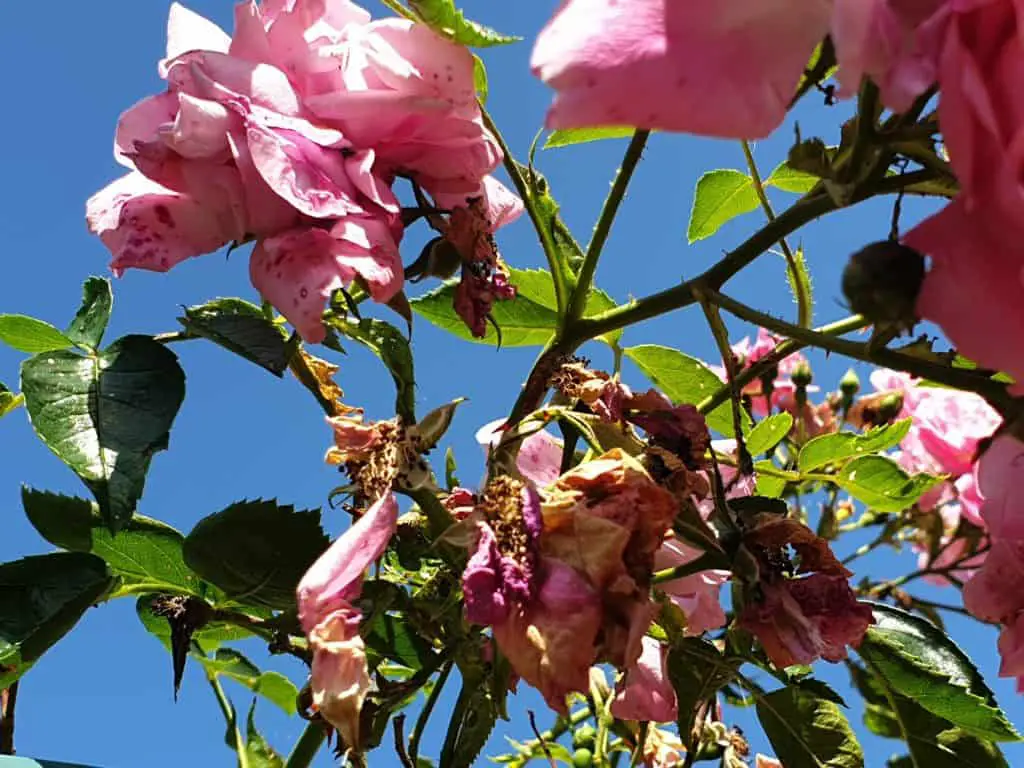
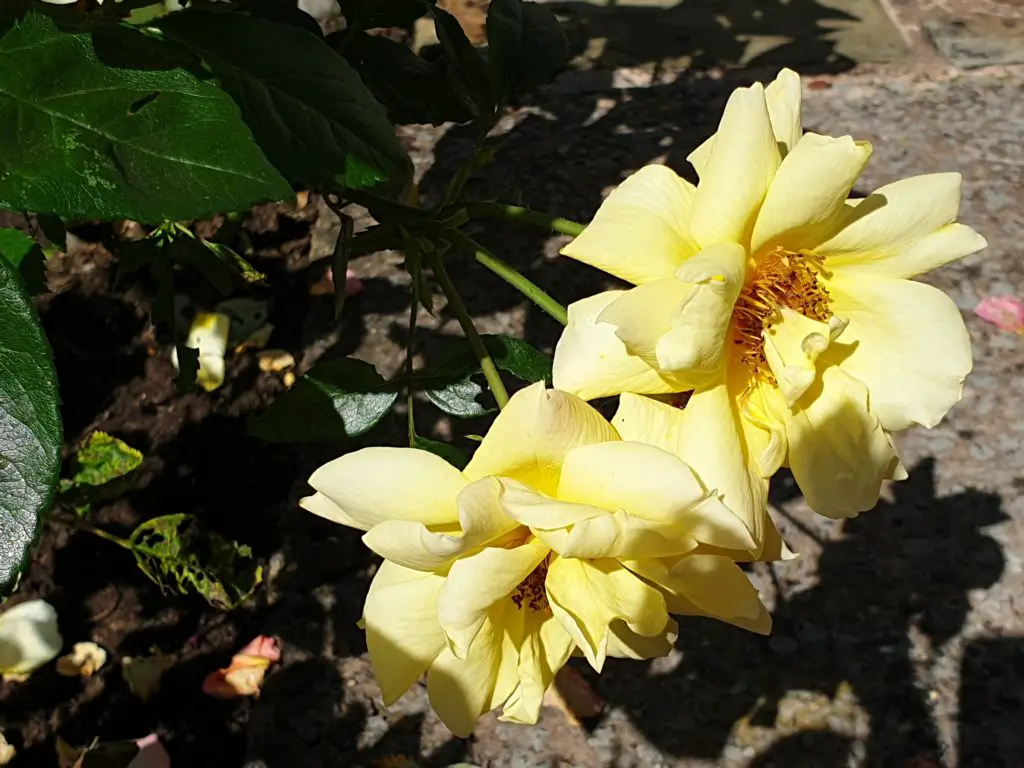
Insect and disease control. Take action at the first hint of an invasion. Even better, practice prior prevention with this organic recipe for disease and insect control.
To 1 gallon of water (rain water if possible), add 4 teaspoons of baking soda, 1 teaspoon of dishwashing liquid and 1 teaspoon of olive oil. Mix well and fill a spray bottle. Spray the bush well, including the undersides of leaves and the center of the plant, to the point of runoff.
This magic mixture can be applied weekly to control fungal conditions and also to repel insects. Some fungal diseases, such as powdery mildew, can even be cured with regular use.
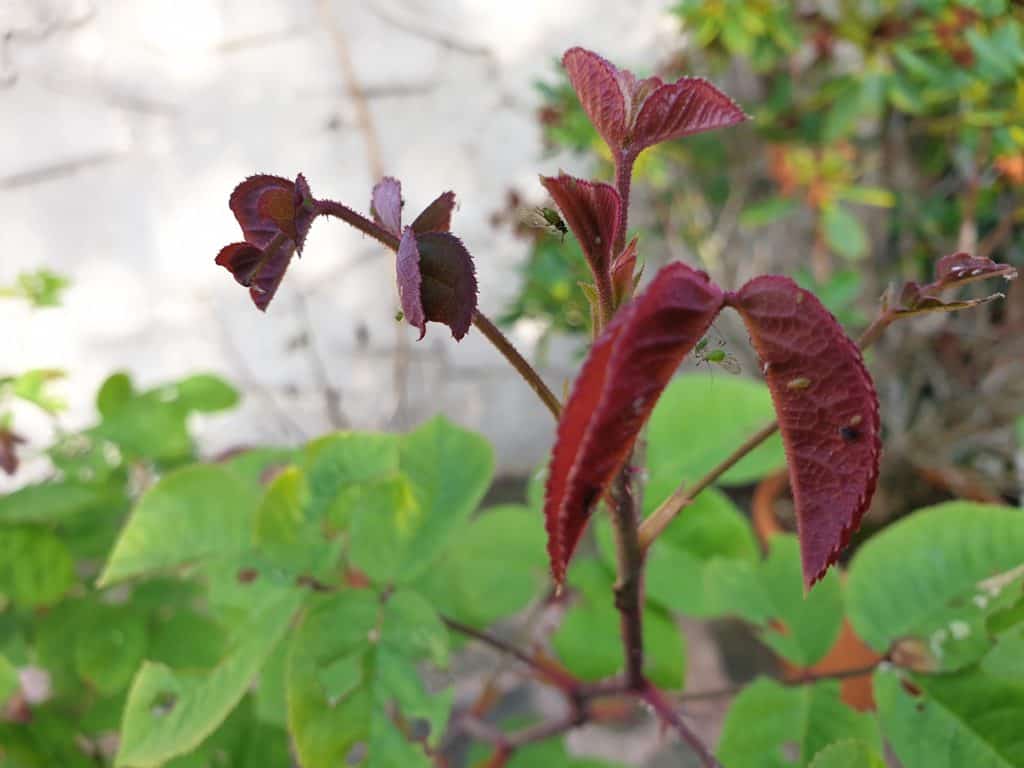
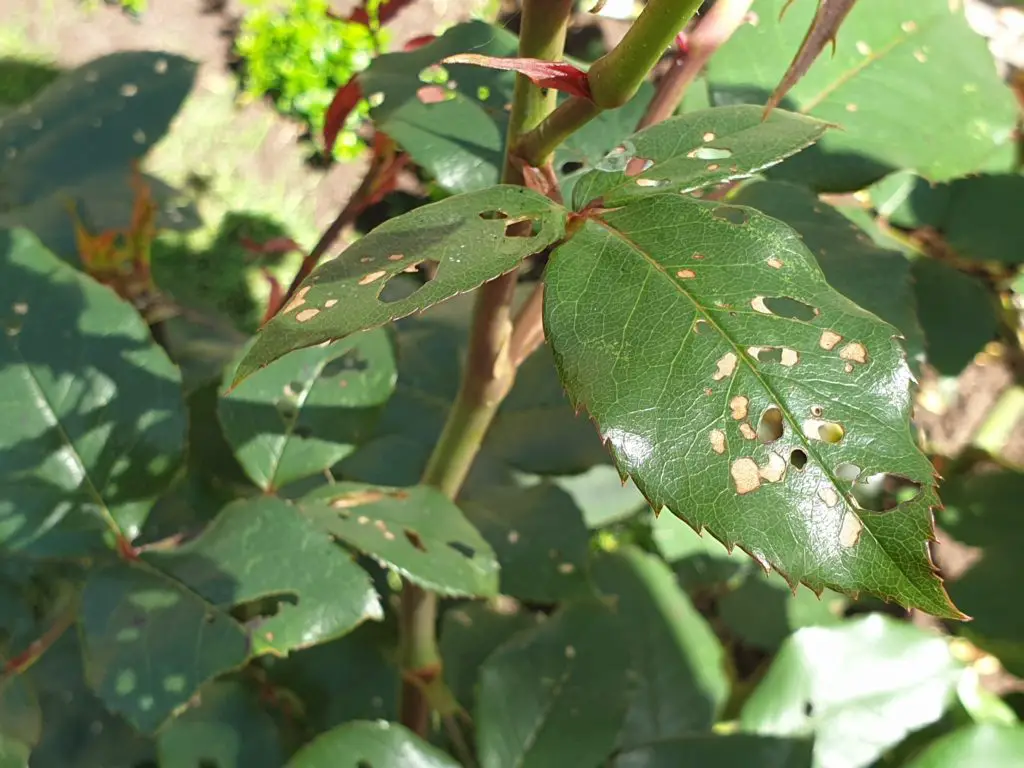
Epsom salts. A form of the common and easily available mineral magnesium sulfate, Epsom salt for your roses supplies trace minerals of both magnesium and sulfur. Sprinkle 1 tablespoon around each bush every 2 weeks and water in well. Gardeners who use Epsom salts point to greener foliage, more vigorous overall growth, more flowers, and even deeper colours.

